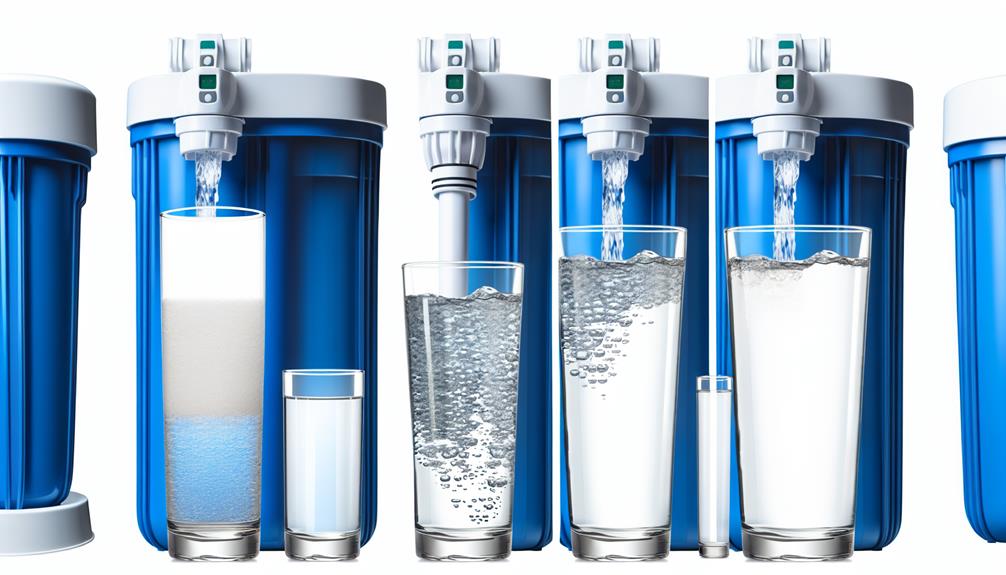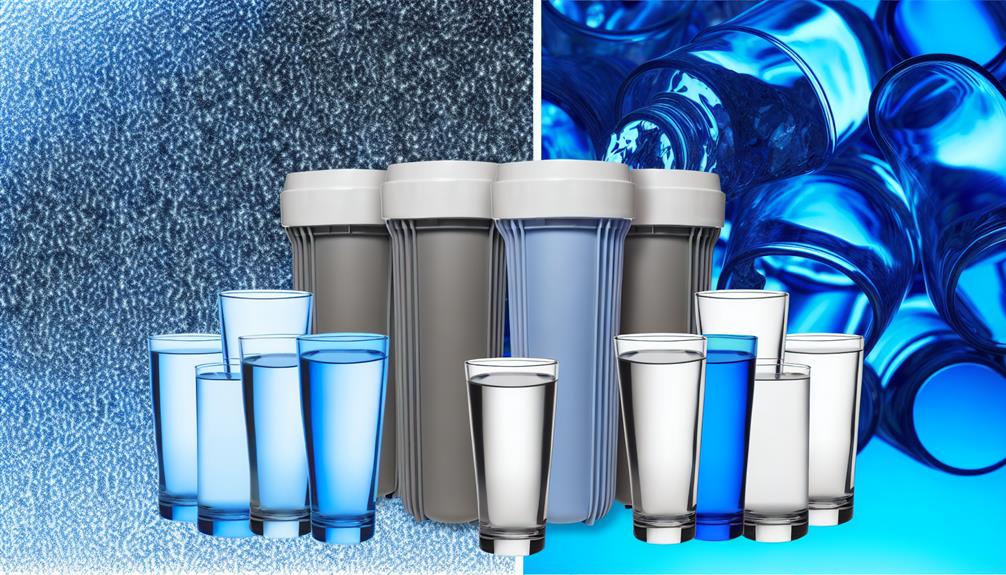As you fill your glass with tap water, it's a coincidence that health experts across the globe are raising alarms about lead contamination. You're likely aware of the risks associated with lead, but the extent to which it can infiltrate your daily life, particularly through something as vital as your drinking water, may surprise you.
Lead exposure, even in small amounts, can have significant health impacts, especially for children and pregnant women. Opting for a lead-eliminating water filter pitcher can be a simple yet effective solution to this pervasive issue. With a variety of filtration methods available, understanding how these pitchers work and their benefits becomes crucial.
You'll want to consider the advantages of a filtered pitcher over other options, and how to select the right one for your needs. As you ponder the safety of your drinking water, bear in mind that the solution might just be within your reach, and the next steps could safeguard your family's health.
Understanding Lead Contamination
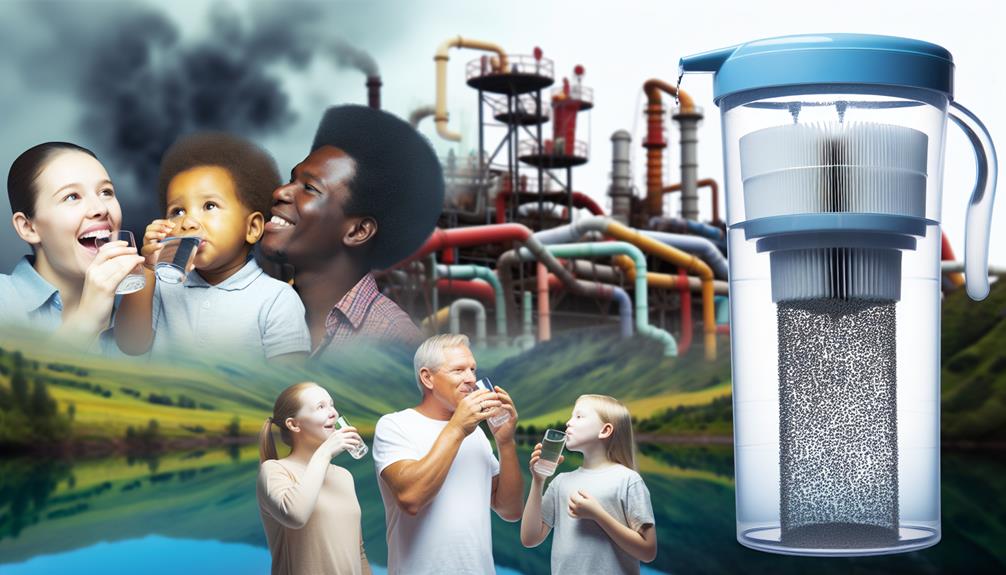
Lead contamination in drinking water, often stemming from aging infrastructure and plumbing systems, poses a significant health risk that necessitates a thorough understanding of its sources, effects, and remediation strategies.
You're dealing with a complex issue where the main lead sources are corroded pipes, solder, and fixtures, which may leach lead into the water supply. This is particularly true in older constructions where lead was used extensively before its harmful effects were fully recognized.
To mitigate these risks, it's crucial to assess the testing accuracy of lead levels in your water. Standardized testing methods are employed to ensure reliability, but the accuracy can be influenced by various factors, including sample collection techniques and laboratory conditions. It's essential to follow prescribed protocols meticulously to avoid contamination or false readings. For instance, the first draw of water after a period of stasis can show elevated lead levels, reflecting lead content from household plumbing.
Understanding these nuances is key to identifying the true extent of lead contamination. Once you have accurate data, you can make informed decisions about the necessary remediation measures, such as installing lead-eliminating water filter pitchers, which are designed to specifically target and reduce lead concentrations in your drinking water.
Health Impacts of Lead Exposure
Understanding the sources and testing of lead contamination sets the stage for comprehending its profound health impacts, which you may face upon prolonged exposure to contaminated water. Lead is a potent neurotoxin; even at low levels, it can cause significant neurological damage. This is particularly concerning for child development, as their growing bodies absorb lead more readily than adults, and their brains are more susceptible to its toxic effects.
Evidence indicates that lead exposure can result in decreased intelligence quotient (IQ) scores, shortened attention spans, and increased behavioral problems in children. These developmental issues can have lasting repercussions, potentially limiting educational and vocational opportunities later in life. For adults, chronic exposure may lead to hypertension, renal impairment, and reproductive problems.
The technical aspect of lead's impact involves its ability to mimic calcium and accumulate in bone tissue, from where it can be remobilized during periods of stress, pregnancy, or lactation, leading to sustained exposure even if the external source is removed. Thus, the investment in a lead-eliminating water filter pitcher isn't just a measure of quality water consumption but a proactive defense against a silent, insidious threat to you and your family's well-being.
Types of Lead Filtration Methods
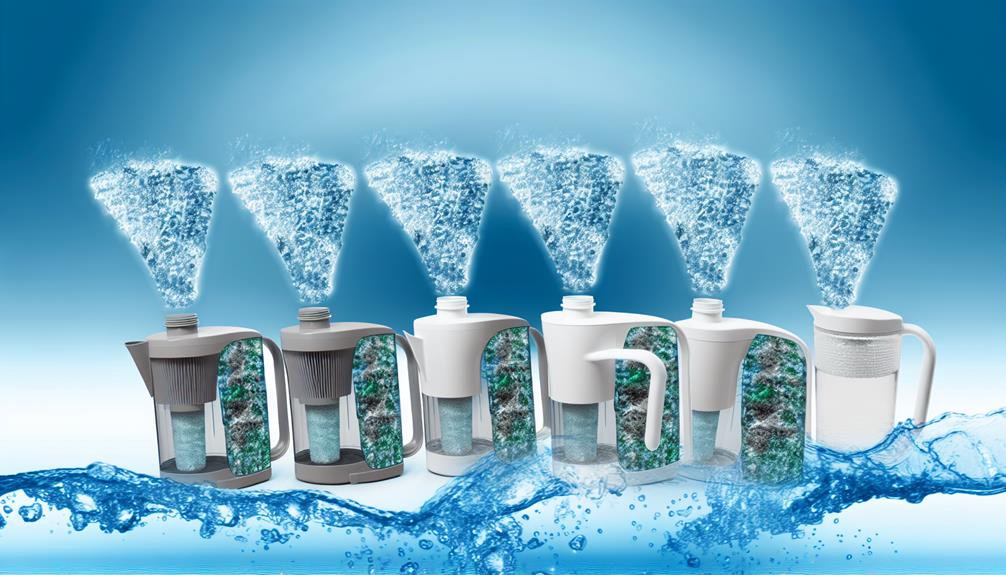
To ensure the safety of your drinking water, several filtration methods have been developed to effectively remove lead, each with distinct mechanisms and efficiency levels. It's crucial to understand these methods to mitigate lead sources efficiently.
Reverse osmosis is one advanced filtration technology that operates by forcing water through a semi-permeable membrane, trapping lead and other contaminants. This process is highly effective, but it requires significant water pressure and can be wasteful due to the water discarded during filtration.
Activated carbon filters, often found in water filter pitchers, adsorb contaminants like lead onto their surface. While less costly, they vary in effectiveness depending on the carbon quality and the contact time with water.
Another method is distillation, where water is boiled, and the steam is collected, condensing back into liquid form. Lead remains in the residue, separating it from the water. However, distillers can be energy-intensive and slow.
Ion-exchange is a process where water passes through resin beads that exchange lead ions with other ions, typically sodium. This method is quite effective for lead removal but may not be suitable for individuals on low-sodium diets.
Each technology has its pros and cons, and often, combining methods yields the best results for lead removal from drinking water.
Benefits of Filter Pitchers
While various technologies offer robust solutions for lead removal, water filter pitchers provide a practical and accessible option for consumers seeking to enhance the quality of their drinking water. You'll find that the filter lifespan of these pitchers is often long-lasting, reducing the frequency of replacements and ensuring continuous protection from lead contamination. Typically, a single filter can treat numerous gallons before necessitating a change, offering you an economical and sustainable choice.
With maintenance ease being a significant concern, water filter pitchers are designed for straightforward use. They don't require complex installation processes or intensive upkeep. You can perform regular maintenance without specialized tools or professional assistance, saving you time and potential service costs. The simplicity of changing a filter cartridge is something you can usually do in minutes, ensuring that your access to clean water remains uninterrupted.
Moreover, the portability of filter pitchers allows you to enjoy purified water beyond the confines of your kitchen. Whether you're at work or traveling, the convenience these pitchers provide aligns with an active lifestyle, granting you the assurance that you're consuming lead-free water wherever you go. This adaptability, coupled with their effectiveness, underscores the practicality of opting for a lead-eliminating water filter pitcher.
Selecting the Right Pitcher
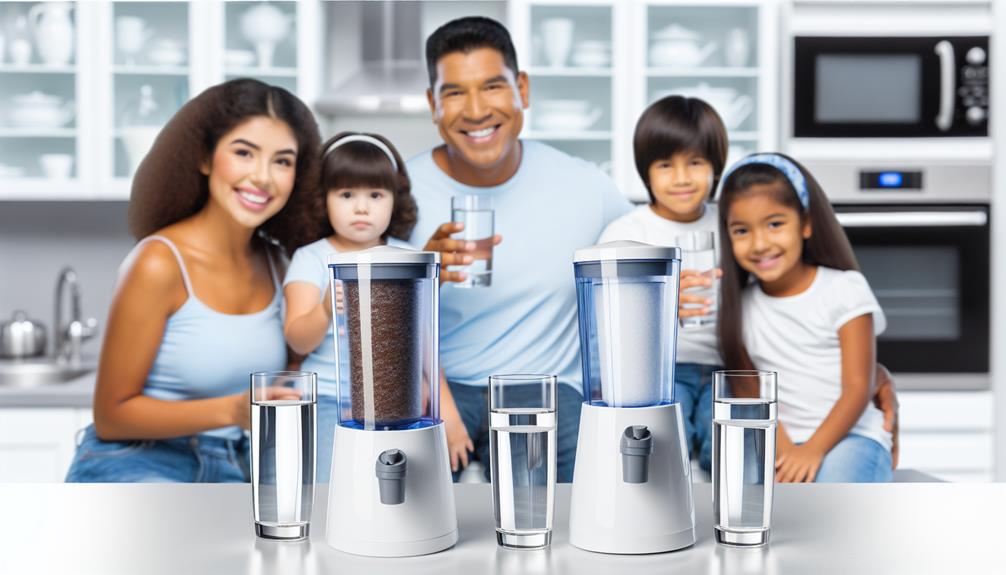
Considering the diverse array of models available, you should assess specific features and certifications when selecting the right lead-eliminating water filter pitcher for your needs. Your decision should be informed by a technical analysis of product specifications and verified compliance with industry standards for lead reduction.
When evaluating potential pitchers, consider these critical aspects:
- Filter Lifespan: Analyze the duration each filter is designed to last before requiring replacement. A longer lifespan not only implies fewer replacements and lower ongoing costs but also suggests a robust filtration system capable of handling a significant volume of water without losing efficacy.
- Certifications: Look for certifications from recognized bodies such as NSF International or the Water Quality Association, which indicate the filter's effectiveness in removing contaminants like lead.
- Maintenance Ease: Assess the design for simplicity in routine maintenance. A pitcher that's difficult to disassemble or requires complex procedures for filter changes can become a source of frustration.
Your choice should prioritize a balance between these factors to ensure you have a reliable, cost-effective solution for obtaining cleaner, lead-free water. Opt for a pitcher that offers ease of use and maintenance without compromising on the quality of filtration.
Conclusion
In conclusion, you must prioritize your health by choosing a lead-eliminating water filter pitcher.
These pitchers effectively reduce lead levels through advanced filtration technologies, safeguarding you from the toxin's severe health consequences.
When selecting a pitcher, analyze the filtration method's efficacy, considering factors like filter life and certification standards.
Opt for a robust solution that offers both convenience and verifiable protection to ensure your drinking water is consistently safe from lead contamination.
